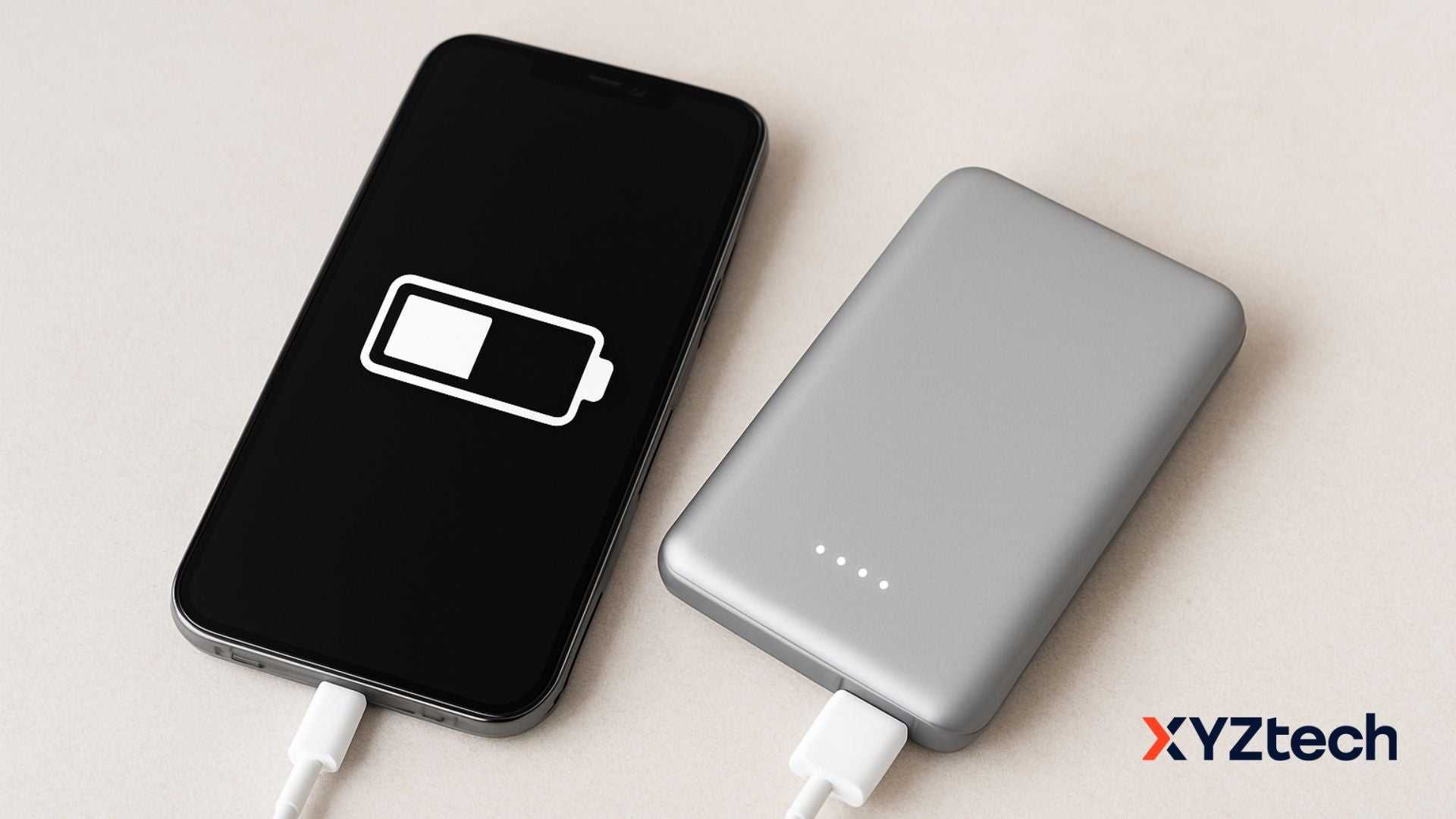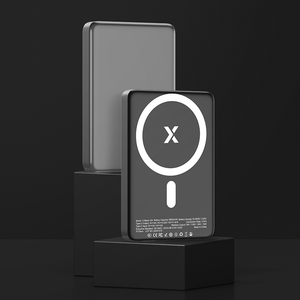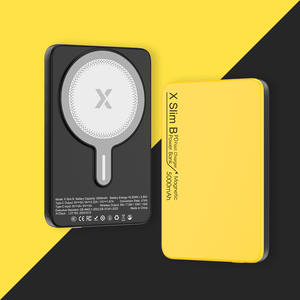SOC in Battery: Why 100% Charge Isn’t Always Good

Most people assume that topping a phone up to 100% is the healthiest routine. The issue: research around SOC in battery shows that staying at full charge can wear the battery out faster. This is why understanding state of charge (SoC) matters. Once you get the basics, you can add months (even years) to your battery’s life.
Today, we’ll break down what state of charge really means, why it’s important for everyday use, and how you can manage it to get the most out of your batteries.
In this blog:
- SOC Battery Meaning and Why It Matters
- How Devices Measure State of Charge
- Why SOC in Battery Matters in Daily Life
- SOC vs. SOH: Don’t Confuse Them
- Everyday Scenarios Where State of Charge Matters
- Practical Tips for Managing SOC in Battery
- Common Misconceptions About SOC
- The Future of State of Charge Technology
- Frequently Asked Questions
SOC in Battery Meaning and Why It Matters
At its core, SOC in battery stands for state of charge, or simply how full your battery is compared to its maximum capacity. Think of SoC (state of charge) as your battery’s fuel gauge. Instead of tracking gas, it shows how much charge remains, displayed as a percentage
- 100% SOC = battery is fully charged.
- 50% SOC = half full.
- 0% SOC = fully drained.
In short, SoC isn’t just a number on a screen. The way you manage state of charge day to day directly affects long-term battery health.
Why charging to 100% isn’t always best
Not all charge levels have the same impact:
- High SoC (80–100%): Puts more stress on the battery’s chemistry, accelerating wear.
- Low SoC (0–20%): Can trigger deep discharges that also shorten lifespan.
- Mid-range SoC (20–80%): The comfort zone where batteries stay healthier for longer.
Picture a rubber band: pulling it to the limits (0% or 100%) repeatedly makes it lose elasticity faster.
How Devices Measure State of Charge
Your device doesn’t just “guess” its SOC, it calculates it using different methods:
- Voltage measurement: The most common way. The device checks battery voltage and estimates how much charge is left.
- Coulomb counting: Tracks how much current goes in and out during charging/discharging.
- Hybrid methods: Many modern gadgets combine both for better accuracy.
This is why sometimes your phone stays at 1% for a long time or drops suddenly. SOC isn’t always perfect, but it’s the best tool your device has to keep you updated.
Why SOC in Battery Matters in Daily Life
Knowing your state of charge isn’t just about avoiding the panic of a dead phone. It impacts how you use and care for your battery:
- Traveling with a power bank: Helps you know if it can last the day or if you need a backup.
- Gaming or streaming: High-drain apps can make SOC drop faster than you expect.
- Overnight charging: Some devices stop charging at 80–90% to preserve battery health, which ties back to SOC monitoring.
- Battery saver modes: Triggered at specific SOC levels (like 20%), reducing background activity to stretch usage.
SOC vs. SOH: Don’t Confuse Them
A common misunderstanding is mixing up SOC in battery (state of charge) with SOH (state of health).
- SOC = how much energy is left right now.
- SOH = how healthy the battery is overall after months/years of use.
For example, a phone might show 80% SOC, but if its SOH has degraded, that 80% might not last as long as it used to when the battery was new.
How to track and manage your phone’s SoC
- iPhone → Settings > Battery > Battery Health & Charging.
- Android → Samsung and Pixel include battery health tools; other models may need an app such as AccuBattery.
- Simple approach → Use charging reminders or the phone’s optimized/Adaptive charging features to keep state of charge in the healthy window.
Everyday Scenarios Where State of Charge Matters
To make it clearer, here are some real-life examples of how SOC affects you:
Using a Power Bank on the Go
If your power bank shows 60% SOC, does that mean it can recharge your phone to 60%? Not exactly. Some energy is lost in the transfer process. Knowing this helps you plan better when traveling.
Charging Overnight
If your phone has optimized charging, it may pause at 80% SOC during the night and finish charging right before you wake up. This helps reduce battery wear and tear.
Sudden Drops in Percentage
Ever seen your phone drop from 15% to 5% instantly? That’s because SOC measurement isn’t perfect; it’s an estimate, and under heavy load, it can fluctuate.
Practical Tips for Managing SOC in Battery
You don’t need to be a tech expert to make your batteries last longer. Here are simple tips tied directly to state of charge:
- Avoid 0% SOC: Don’t let your battery hit zero often; it strains the cells.
- Stay in the middle range (20–80%): This is the sweet spot for long-term health. Built-in features like Optimized Charging (iPhone) or Protect Battery (Samsung) can help by capping charge around 80%.
- Charge in short bursts: Instead of running full 0–100% cycles, top up when needed (even 60–70% is enough before heading out).
- Don’t linger at 100%: Avoid overnight charging so your battery isn’t sitting at full for hours.
- Watch SOC on power banks: Learn what the lights or numbers mean so you’re not caught off guard.
- Use low-power modes: Turn on battery saver when SOC drops under 20% to stretch usage.
- Occasional full charge is fine: Just avoid making it a daily habit.
Common Misconceptions About SOC
Let’s clear up a few myths:
-
“100% SOC means my battery is in perfect condition.”
Not true. SOC only tells you how full it is, not how healthy the battery is overall. -
“I should always charge to 100%.”
Not necessary. Keeping SOC at 80–90% is actually healthier in the long run. -
“My power bank at 50% can charge my phone to 50%.”
Efficiency losses mean you’ll get less than expected. SOC gives you a rough estimate, not an exact one.
The Future of State of Charge Technology
Manufacturers are working on a smarter SOC in battery tracking. Some new devices already:
- Predict how many hours you can keep using your phone at the current SOC.
- Limit charging automatically to preserve battery life.
- Use AI-based algorithms to improve SOC accuracy.
This means better reliability in the numbers you see on your screen.
Frequently Asked Questions
What is a good battery SOC?
For most batteries, the ideal state of charge is somewhere between 20% and 80% during regular use. This range helps reduce wear and extends the battery’s lifespan. If the battery won’t be used for weeks or months, keeping it around 50–60% before storing is recommended to prevent long-term damage.
What is high SOC?
A high state of charge simply means the battery is holding close to its maximum energy capacity. While that’s good for immediate use, keeping a battery at 100% for long stretches can cause faster aging. Letting it cycle between moderate levels instead of always topping it off helps preserve health over time.
What is SOC and DOD in battery?
SOC, or state of charge, tells you how much energy is left in the battery as a percentage of its full capacity. DOD, or depth of discharge, measures how much of the battery’s stored energy has been used up. For example, if a battery has 70% SOC, that means it has a 30% DOD. These two terms work together to show both the remaining and consumed capacity.
Wrapping Up…
Understanding SoC in battery doesn’t require an engineering degree. It’s simply knowing how much energy your device has left, and using that knowledge to avoid surprises. The state of charge affects not just convenience, but also how long your batteries stay healthy.
So next time you glance at that percentage icon, remember, it’s more than just a number. It’s a tool you can use to plan better, charge smarter, and make your batteries last longer.
Have you noticed any habits that help keep your phone’s battery healthy? Share your observations or experiences, we’d love to hear what works for you.
Related Articles
Optimized Battery Charging: What It Is & Why It Matters
How to Keep A Phone Battery Healthy: Top 10 Battery Care Tips







